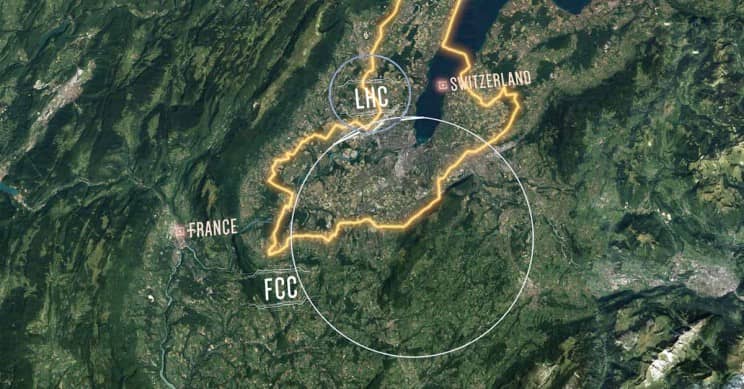The Future Circular Collider (FCC) collaboration has proposed the construction of a new circular collider. According to the reports, with this construction the current world’s largest collider, CERN’s Large Hadron Collider (LHC), will look like a small feat. The proposed collider will be about four times the length of the Large Hadron Collider.
The Conceptual Design Report is comprised of four volumes and has been put forth by FCC collaboration. The collaboration is made up of thousands of physicists from more than 100 universities. The report proposes different designs for the new circular collider to replace the LHC in the coming decades.

The Future Circular Collider collaboration talks about the different probabilities for the future of the physics with machines capable of producing such huge amounts of energy. They also addressed the technical problems that would require solving along with the slated completion and costs that are associated with the designs.
The Future Circular Collider study kicked off in 2014 following the 2013 recommendation by the European Strategy for Particle Physics. The recommendation was put forth by the bigger particle physics community regarding the direction of the field in the context of projects such as FCC. The aim for Europe was to ‘be in a position to propose an ambitious post-LHC accelerator project at CERN by the time of the next Strategy update.’
Fabiola Gianotti, Director-General of CERN said, ‘The FCC conceptual design report is a remarkable accomplishment. It shows the tremendous potential of the FCC to improve our knowledge of fundamental physics and to advance many technologies with a broad impact on society. While presenting new, daunting challenges, the FCC would greatly benefit from CERN’s expertise, accelerator complex, and infrastructures, which have been developed over more than half a century.’
The LHC has delivered exceptional results during ten years of its service. However, it does have its limitations. The discovery of the Higgs boson would not have been made if it was not for the LHC. However, if we are to explore the features of the Higgs boson; we need more energy than the LHC can deliver.

The Future Circular Collider will be able to help us to study these features and also enable scientists to observe various other phenomena that require a new physics for their explanation such as the imbalance between the predominant matter over scarcer antimatter and the dark matter’s nature.
The project being proposed is gigantic, to say the least. The suggestion requires for a 100-km superconducting proto accelerator ring that offers energies as high as 100 TeV – thus creating a particle collider that is much more powerful than the LHC.
As per Frédérick Bordry, CERN Director for Accelerators and Technology, the FCC will be completed in phases. ‘The FCC timeline foresees starting with an electron-positron machine, just as LEP preceded the LHC. This would enable a rich programme to benefit the particle physics community throughout the twenty-first century.’
The cost of the initial electron-positron collider (EPC) will be around 9 billion euros whereas the 100-km tunnel to contain it will cost an additional 5 billion. Once it has been completed, the construction will move to create the superconducting proton machine. As per CERN, ‘A future circular collider would offer extraordinary opportunities for industry, helping to push the limits of technology further. It would also provide exceptional training for a new generation of researchers and engineers.’


